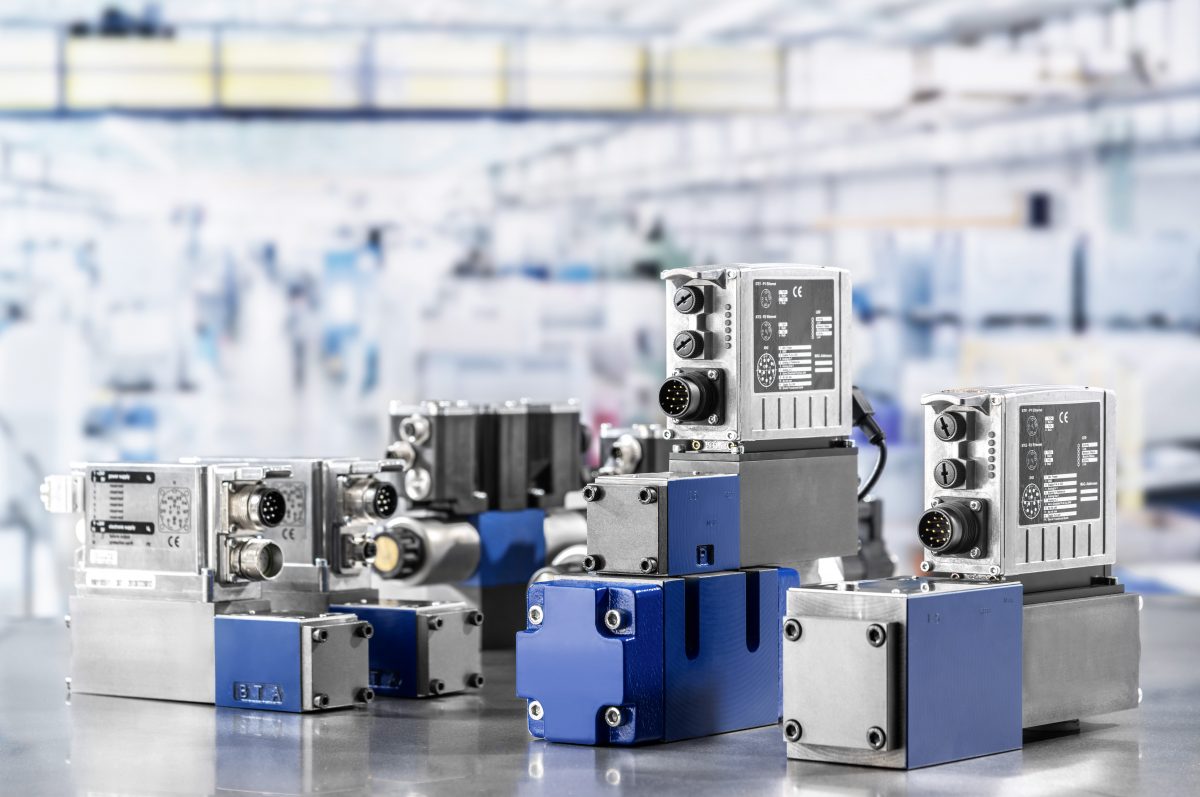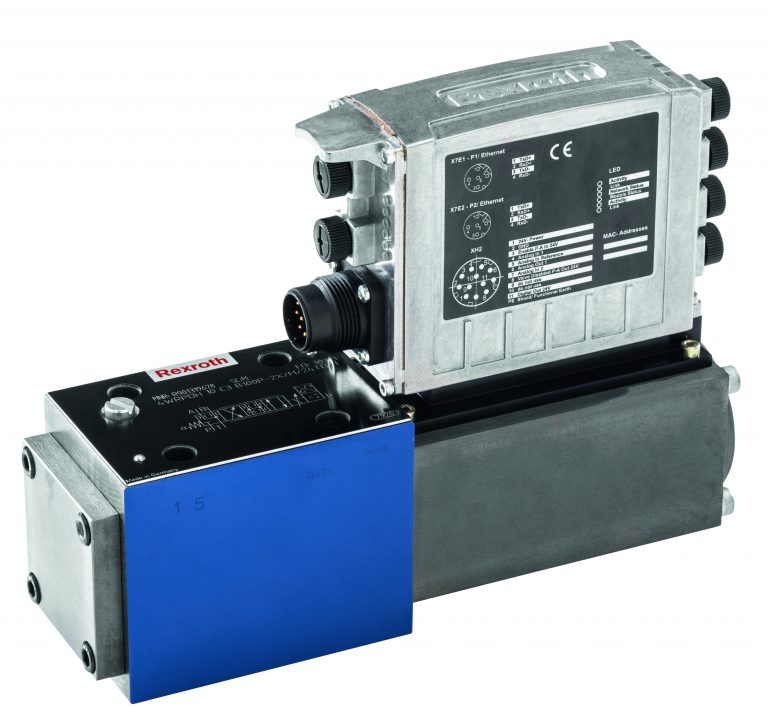Guest Contributor, Bosch Rexroth
Hydraulic drives move high loads and ensure safety-relevant functions. Their failure can result in tremendous downtime costs. It is therefore important to maintain the interaction between material, surface quality and fluid as coordinated by the manufacturer. With spare parts and repairs according to original specifications, operators can secure original performance over a long period of time.
Every year, millions of euros are invested in the development of new hydraulic components. Each new generation of solutions is even more powerful, energy efficient and reliable than the one before. The underlying field of research is called tribology – the science of friction, lubrication and wear.
Ensuring smooth performance
Tribology investigates all frictional processes that occur between two surfaces moving in relation to each other and considers the type of material, surface quality and the lubricant (fluid) as the main influencing variables. If hydraulic components are developed according to tribological principles, important savings can be made both in energy and material consumption and in production and maintenance. How can operators secure the advantages of the latest product generation for as long as possible?

Figure 1: Material, surface and lubrication: The scientific field of tribology investigates the friction between two bodies and seeks optimal conditions for minimal wear.
Change a perfect system? Better not!
Hydraulic components in which materials, surfaces and fluid are matched to each other in such a way that they achieve optimum efficiency with minimum wear are called a “tribological system”. This perfect interaction stands and falls with maintenance. If only a single parameter is changed, the system loses its balance, i.e. the optimum efficiency is no longer achieved, energy consumption and electricity costs increase and the service life is negatively affected. This happens, for example, if spare parts made of a different material or with a lower surface quality are used, if components are improperly repaired or a fluid is used that does not match the material.

Figure 2: Fluid-related damage to various components of an axial piston pump.
Play it safe: Spare parts from the manufacturer
To prevent operators from suffering functional losses and damage, Bosch Rexroth subjects the evaluation of fluids to strict requirements that go far beyond the recommended standard. The manufacturer also sets the same high-quality standards for its own spare part production as for the original. Replicas, on the other hand, offer neither the same material composition nor the same surface quality. The consequences are unplanned outages, significantly higher life cycle costs and premature new investments. Choosing original spare part is already worthwhile with the smallest parts. For example, Bosch Rexroth provides completely ready-to-install seal kits in original equipment quality – including parts list and exploded drawing. Thanks to the precise instructions, the average time required for dismantling, cleaning and reassembling a pump is reduced from a good two hours to less than 60 minutes.

Figure 3: Surface comparison: In contrast to the original from Bosch Rexroth (left), the plagiarism (right) shows large scores. The unfavorable flow conditions decrease efficiency. Leakage and cavitation are increased, especially under high pressure.

Figure 4: Serious quality differences in material and processing: The plagiarism (right) cannot withstand high pressure and “breaks”. The result: premature wear and tear and damage due to liquid contamination.
Original repair receives manufacturer specification
Repairs that are not commissioned at the manufacturer or certified partners often also result in unforeseen expenses. This is because without access to current data and parts lists, without in-depth know-how and without the right test benches, other suppliers cannot restore the original specification including functional reliability. In the worst case, there is even a risk of liability.
What ultimately distinguishes an original repair from an uncertified one? Here’s an example: When a Bosch Rexroth axial piston pump is inspected and repaired by trained service personnel in a specially equipped, ISO 9001-certified service center, it undergoes qualified testing and repair according to standard guidelines and processes. All failure-critical components are replaced and the original manufacturer’s specification is tested and confirmed on the test bench.
Replacement is better than rework
Non-certified suppliers frequently rework components, thereby destroying the original surface quality of highly stressed components such as pistons with slide shoe, control plates or sliding disks. Control valves on pumps are usually only cleaned and reinstalled. This short-sighted repair practice leads to increased leakage and consequently to a strong vibration tendency. Both accelerate wear, reduce efficiency and shorten the service life. By repairing with original Rexroth spare parts from the manufacturer, however, operators can ensure the original performance and availability for the next few years, including a twelve-month warranty on new parts. In addition, fixed-price repairs and agreed throughput times ensure cost security. This way, operators are protected from surprises and can plan ahead.

Figure 5: Rework vs. replacement: Leakage oil measurements on a remanufactured pump controller (A4VSO) show significantly higher values than when the original component is replaced: Vibrations, increased wear and early failures can be the result.
Avoiding liability risks
In some countries, improper repairs can also result in liability risks for the operator. In Germany, for example, the manufacturer is not liable under § 1 Sections 2 and 3 ProdHaftG (German Product Liability Act ) for defects that occur after the product has been placed on the market. Instead, the operator is responsible for the consequences of improper repairs. If the operational safety according to the CE mark is no longer given, the insurance company might not pay for damages.
Our conclusion: Sometimes saving money doesn’t pay off – preserve values instead
Those who want to save costs in the short term – by using counterfeit products and non-original repairs – pay extra in the long term. To benefit permanently from the original performance and a long service life, it pays off to include the manufacturer’s expertise in terms of technology, industry and application in maintenance, too. Only with proven manufacturer specifications can the original performance data and resulting function, productivity and efficiency be guaranteed.
Close cooperation with Bosch Rexroth is also worthwhile for other reasons: for example for engineering support, for professional instruction and training of operating and maintenance personnel, or to update the cost-effectiveness, energy efficiency and safety of existing systems. This way, a supplier relationship becomes a profitable partnership for a perfectly smooth operation.
CMA/Flodyne/Hydradyne is an authorized Bosch Rexroth distributor in Illinois, Wisconsin, Iowa and Northern Indiana.
In addition to distribution, we design and fabricate complete engineered systems, including hydraulic power units, electrical control panels, pneumatic panels & aluminum framing. Our advanced components and system solutions are found in a wide variety of industrial applications such as wind energy, solar energy, process control and more.
________________________________________________________________________________________________________________________

 No drive technology is more efficient, compact and robust than hydraulics when dealing with forces in excess of 600 kN. So why is it that the importance of hydraulics is often overlooked in the training and development of our young engineers?
No drive technology is more efficient, compact and robust than hydraulics when dealing with forces in excess of 600 kN. So why is it that the importance of hydraulics is often overlooked in the training and development of our young engineers?


 CMA/Flodyne/Hydradyne
CMA/Flodyne/Hydradyne